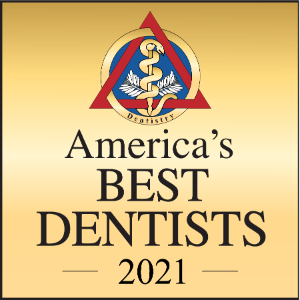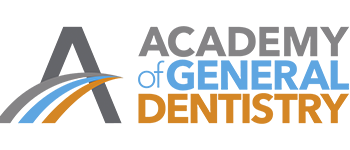When facing an emergency dental situation, it’s essential to have a clear understanding of the procedures involved and how best to prepare for them. Ensuring effective treatment and a quick recovery starts with patient knowledge and action.
It’s crucial for patients to recognize the signs that indicate the need for emergency dental care. Symptoms such as severe pain, significant bleeding, or a loose or knocked-out tooth should prompt immediate action. Recognizing these signs early allows for quicker interventions, which can significantly improve outcomes.
Patients must understand the types of procedures that may be required in an emergency. Treatments like root canals for severe infections or extractions for irreparably damaged teeth are commonly performed. Being aware of these procedures can alleviate anxiety and better prepare the individual for what to expect during treatment.
Preparation for an emergency dental visit involves practical steps before arriving at the dental office. This might include gathering any relevant dental history, understanding insurance coverage, and having a plan for post-procedure care. Being prepared in this way will streamline the process and reduce delays, contributing to a smoother experience and faster healing.
Your Guide to Emergency Dental Care
Dental emergencies require prompt action and clear-headedness. This guide explains how to identify a dental emergency, what to anticipate during treatment, and prepares patients for a swift, effective response.
Determining the urgency of a dental situation is the first step in handling an emergency. For instance, a patient experiencing intense tooth pain after office hours must decide if the pain is bearable until the next appointment or if it requires a visit to the emergency room. The ability to judge the severity of the symptoms can lead to faster pain relief and reduce the risk of complications.
Understanding the nature of emergency procedures is essential. Treatments such as emergency root canals or extractions are performed to address issues like acute infections or damaged teeth. Having knowledge of these procedures demystifies them, thus helping patients to approach their predicament with less apprehension and more confidence:
- Urgency Assessment: Ability to judge symptom severity leads to faster pain relief
- Procedure Knowledge: Understanding treatments reduces apprehension and builds confidence
- Administrative Preparation: Having documents and insurance information ready streamlines care
- Focus on Healing: Proper preparation allows concentration on recovery rather than logistics
Being prepared for an emergency dental visit involves more than recognizing the need for assistance. It also includes knowing which documents to take along, such as a list of current medications, and what to expect with insurance and payment methods.
Recognizing True Dental Emergencies
Quickly recognizing dental emergencies is vital to receiving appropriate care. Patients must be able to identify which dental issues are urgent to ensure timely and effective treatment.
One of the first indicators of a dental emergency is the onset of severe pain. When pain disrupts daily activities, it’s a clear sign that immediate professional attention is needed. For example, if a toothache becomes unbearable, it could signal an abscess needing prompt intervention to prevent further infection.
Infection is another critical red flag. Signs such as swelling, fever, or a foul taste may indicate that an infection is present and spreading. In such cases, swift action is necessary to treat the infection before it causes more serious health problems or worsens the patient’s condition, requiring more complex procedures.
Physical trauma that results in damage to the teeth or gums also qualifies as an emergency. This can include a cracked or knocked-out tooth from an accident. Knowing to seek dental assistance immediately in such situations can be the difference between saving a tooth and losing it, stressing the importance of recognizing and reacting to trauma quickly.
Overcoming Fear and Anxiety
Alleviating fears associated with dental emergencies is essential for patient comfort and cooperation. Providing accurate information and setting realistic expectations can significantly reduce the anxiety that often accompanies emergency dental situations.
One common source of patient anxiety is fear of pain. Many people associate dental treatments with discomfort, which can be paralyzing and delay seeking necessary care. Clarifying that pain management techniques have advanced and that most emergency procedures can be performed with minimal discomfort helps patients overcome their apprehensions about treatment.
The unknown elements of dental procedures also contribute to patient stress. Informing patients about each step of common emergency treatments, such as what a root canal entails or how an extraction is performed, can demystify the processes. With this understanding, patients are less likely to fear the procedures and more likely to approach them calmly.
Debunking myths that persist about emergency dental care is crucial in managing patient expectations. Many people hold outdated or inaccurate beliefs about dental treatments that can exacerbate their anxiety. By correcting these misconceptions with current, factual information, dental professionals can provide reassurance and build trust.
Accessing Emergency Care When You Need It
Securing immediate dental care when an emergency strikes is of paramount importance. It requires clear channels of communication and understanding among the dental office, the patient, and insurance providers.
One obstacle in accessing emergency care is clinic operating hours. Dental emergencies don’t adhere to a 9-to-5 schedule; they can occur at any time. Providing patients with clear information on how to get help outside of normal hours, such as an emergency hotline or a partnership with an after-hours clinic, ensures that patients can receive assistance whenever it’s needed.
Another concern is the complexity of insurance processes. Understanding what’s covered can be daunting, and the fear of unexpected costs can prevent patients from seeking timely assistance. Dental offices that offer comprehensive insurance guidance, clearly explaining the coverage and assisting with claims, can remove financial barriers:
- 24/7 Access: Emergency hotlines and after-hours partnerships ensure round-the-clock care availability
- Insurance Clarity: Comprehensive guidance removes financial barriers to seeking timely treatment
- Service Transparency: Clear information about procedures and logistics sets appropriate expectations
- Communication Channels: Multiple contact methods ensure patients can always reach professional help
Transparent communication regarding the range of services offered and the logistics involved in handling emergencies can help set patient expectations. This includes concise, accessible information on the procedures available, the estimated wait times, and the preparation needed.
Being Prepared: Your Emergency Action Plan
Efficient handling of dental emergencies depends on proactive measures and informed responses. Preparedness equips patients with the knowledge and tools necessary to navigate the initial phase of an emergency confidently.
Having an emergency dental kit at hand is an example of proactive preparedness. This kit could include items such as gauze to control bleeding, a small container with a lid to preserve a dislodged tooth, and over-the-counter pain relievers. With these items immediately available, patients can administer initial care, potentially improving the condition before professional treatment.
Knowledge of first-response actions is another critical aspect of preparedness. Patients who are educated on how to manage a broken tooth or alleviate severe pain can take crucial steps while arranging to see a dentist. This immediate response can ease discomfort and provide temporary solutions that may prevent further dental damage.
Understanding the procedures and what recovery entails gives patients a sense of certainty during stressful times. If an individual is familiar with what a root canal procedure involves or the typical recovery period for an extraction, it can make the experience less daunting, allowing them to approach the emergency with a calm and composed mindset.
When to Seek Immediate Care
Effective management of dental emergencies is critically dependent on the patient’s ability to make prompt decisions guided by reliable criteria. Well-defined guidelines can help patients accurately assess their situation and choose the appropriate course of action.
Recognizing specific symptoms that warrant immediate attention is key for patients. For example, if someone experiences severe oral pain that disrupts sleep or persistent bleeding that won’t subside with pressure may be clear indications that emergency care is needed. By being aware of such escalation triggers, patients can quickly decide to seek professional help rather than risking their oral health by delaying.
It’s equally important to understand when an issue may not require urgent care. Non-severe symptoms like minor tooth sensitivity or a small chip in a tooth might be safely managed until a regularly scheduled dental appointment. Patients with a solid grasp of these criteria can avoid unnecessary visits to the emergency room.
The ability to ask oneself relevant contextual questions is vital. Questions such as “Is the pain manageable with over-the-counter medication?” or “Is there any significant swelling or signs of infection?” help patients perform a self-assessment. This informed self-evaluation process empowers patients to take control of their dental health.
Professional Support and Resources
Ensuring patients have continuous access to professional dental advice is crucial for managing dental emergencies effectively. Reliable and accessible resources can offer reassurance and immediate support to patients in need.
Informative online content serves as an educational tool for patients outside of clinic hours. Websites hosting detailed articles, illustrative videos, and comprehensive FAQs can address common concerns and provide guidance for emergency situations, such as how to temporarily manage a toothache or care for a chipped tooth until professional help is available.
Direct contact with the dental office is equally important in offering personalized support. Dental practices that provide an emergency contact number or an on-call service enable patients to receive direct advice from a professional. Whether it’s late at night or on a weekend, these communication channels ensure that a patient is never left to handle a dental crisis alone.
Incorporating patient education into the routine care experience also equips individuals with the knowledge needed when emergencies arise. For example, during regular dental check-ups, patients could be briefed on the steps to take if they encounter an emergency, such as the immediate actions following an avulsed tooth.
Prevention: Your Best Defense
Preventive dental care is the cornerstone of avoiding dental emergencies. Regular dental check-ups, proper oral hygiene, and being informed about potential dental risks are key strategies that contribute to maintaining oral health and preventing the need for emergency interventions.
Committing to routine dental examinations is important. These regular visits allow dentists to detect and address potential issues before they escalate into emergencies. Issues such as early signs of decay or gum disease can often be treated easily when identified promptly, saving patients from pain and more complex treatments down the line.
Maintaining sound oral hygiene is another preventive measure. Daily brushing, flossing, and using mouthwash can significantly decrease the likelihood of developing serious tooth and gum problems. For example, consistent flossing can prevent periodontal disease, a common emergency root cause, by removing the plaque and bacteria that a toothbrush can’t reach.
Educational initiatives about potential risks play an essential role, too. Examples include awareness about the risks of oral piercings or the importance of wearing a mouthguard during sports. By understanding the causes of dental emergencies, patients can take active steps to avoid them.
Your Path to Confident Emergency Preparedness
Well-informed patients who have engaged in foresight are best positioned to handle dental emergencies with beneficial results. Education concerning emergency scenarios and their requisite actions are foundational to safeguarding oral health.
Recognizing the signals that denote a dental emergency cultivates an environment where speedy action is reflexive. It’s the understanding that a broken tooth or sudden, intense pain needs immediate attention, which can make a significant difference in the treatment’s outcome, like saving a tooth instead of losing it. Having knowledge about the typical procedures performed in an emergency instills clarity and calm in patients, removing the element of surprise and trepidation during the process.
At Dr. Bethaney Brenner’s practice in Burlington, CT, we understand that dental emergencies can be overwhelming experiences, but with proper knowledge and preparation, you can navigate these situations with confidence and achieve the best possible outcomes. Preemptive measures taken before emergencies occur, such as regular dental checkups and good oral hygiene, underpin the adage that prevention is better than cure, forming a defense against the development of acute dental conditions that can lead to emergencies.
Ready to be fully prepared for any dental emergency and ensure you know exactly what to expect when urgent dental care is needed? Contact Dr. Bethaney Brenner’s practice today to learn how our comprehensive approach to emergency dental care combines patient education, immediate response protocols, and preventive strategies to help you handle dental emergencies confidently while preserving your oral health for the long term.







